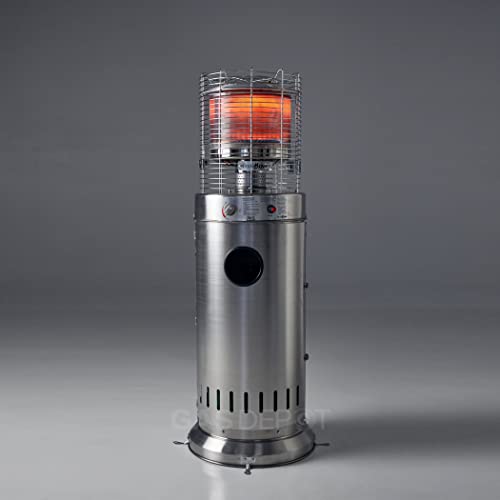Cheap Patio Gas Heaters

Patio heaters come in many different designs and sizes. gas fire patio heater fireplacesandstoves.uk are electric hardwired and require professional installation, while others use natural gas or propane to heat your space.
Neat, mobile gas cylinders are available in sizes from 5kg green patio bottles up to 13kg propane cylinders in red. They work with standard BBQs, mobile heaters and Ooni pizza ovens.
Cost
A patio gas heater can increase the value of your business or home and increase the number people who use your outdoor space. It's a low-cost alternative to other heating systems for outdoor use, like a wood-burning fire pit or propane heaters. The gas heater for patios can also be used indoors for use to create a cozy atmosphere during the winter.
The price of gas for patios is dependent on the model and size of the appliance. For instance, a 5kg propane bottle for a patio costs around PS28. This includes a clip-on regulator** that is compatible with the majority of barbecues and patio heaters. Certain patio heaters may require an additional regulator.
A propane gas cylinder is a great choice for pizza ovens, and tabletop heaters. It is inexpensive and has no odor. It is also easy to store and transport. The majority of propane-powered appliances are sturdy and secure. They can last for a long time and are a great choice for both businesses and homeowners who need to save money on heating costs.
Propane is an environmentally friendly fuel that is clean burning and can be used for heating cooking, cooking, and other applications. It is also less expensive than electricity and requires less maintenance. It is also less affected by price increases when oil prices spike.
Efficiency
The use of gas patio heaters is an efficient method to heat up an outdoor space. They can heat an area of 215ft2 quickly and efficiently. Unlike electric heaters, they do not require installation and can be moved around easily. They can also be switched off or on using the remote control or programed timers. Some models come with an automatic shut-off feature to ensure that accidental fires are not started.
When it comes to choosing gas types, there are two options available: butane and propane. Butane is colder than propane. Both are LPG however they differ by their boiling point and the speed of boiling. Butane, which is also known as "patio gas" is usually stored in green cylinders. Propane is stored in containers that are red. Both types of gas are compatible with all regular BBQ and patio heaters and are available in most garden and home centres.
Gas bottles for your patio are available in sizes ranging from 5kg to 13kg. They are designed to fit comfortably inside your BBQ or heater. They can be used with regular BBQ regulators and some even come with an indicator that informs you that the gas is low. You can save money by using butane instead of propane. Many appliances can be converted to run with either fuel.
Butane is especially efficient in warm temperatures. It is perfect for BBQs as well as camping gas stoves and portable heaters. It is less efficient in the winter because it cannot flow at lower temperatures. It is a low-toxicity fuel with a low carbon footprint and is a great choice for those who are concerned about their environmental impact.
It is important to follow the directions that are provided by the manufacturer when using an appliance for heating your patio with gas. It is important to follow the manufacturer's instructions to avoid carbon monoxide poisoning. Also the appliance should not be exposed to naked flames or high temperatures. Additionally patio heaters must be installed in open areas with adequate ventilation. They should not be used indoors or in enclosed spaces.
Safety
If you plan to use propane gas for your patio and hearth, you need to be aware of security concerns. These safety precautions include proper handling and storage as well as the use of Personal Protective Equipment (PPE), and establishing emergency procedures. For instance, cylinders must be stored outdoors in a designated space away from ignition sources, and they should not be moved. If there is a leak the gas must be shut off and people evacuated. All cylinders must be clearly marked with the contents and the supplier's information. The valve should be able to be operated by hand and without force.
